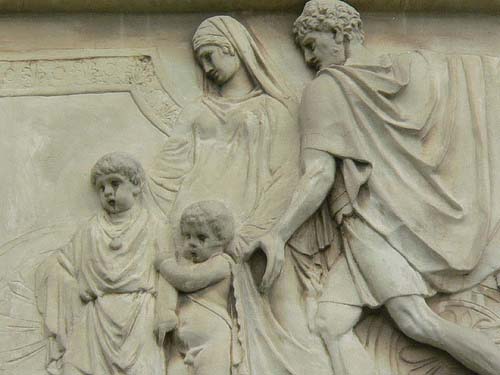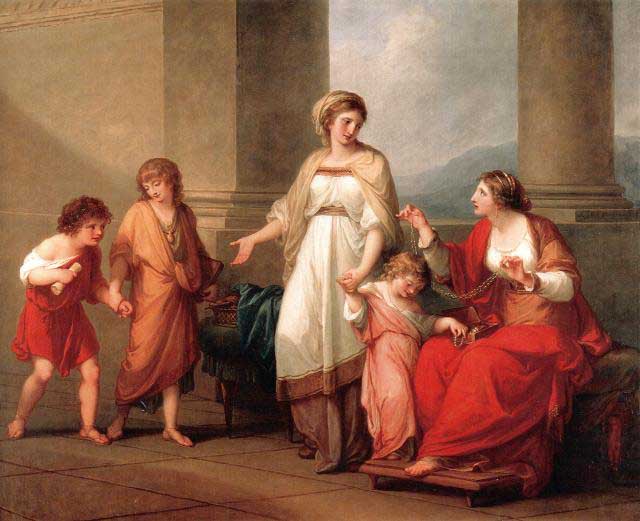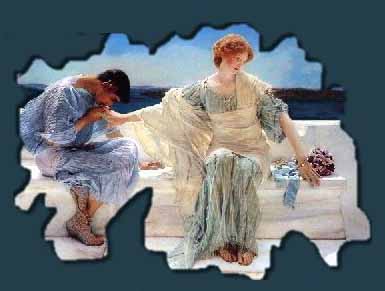

The basic units of Roman society were households and families. Households included the head (usually the father) of the household, pater familias (father of the family), his wife, children, and other relatives. In the upper classes, slaves and servants were also part of the household. The head of the household had great power (patria potestas, "father's power") over those living with him: He could force marriage (usually for money) and divorce, sell his children into slavery, claim his dependents' property as his own, and even had the right to punish or kill family members (though this last right apparently ceased to be exercised after the 1st century BC).
Patria potestas even extended over adult sons with their own households: A man was not considered a paterfamilias, nor could he truly hold property, while his own father lived. During the early period of Rome's history, a daughter, when she married, fell under the control (manus) of the paterfamilias of her husband's household, although by the late Republic this fell out of fashion, as a woman could choose to continue recognizing her father's family as her true family. However, as Romans reckoned descent through the male line, any children she had belonged to her husband's family.
Not much affection was allowed to be shown to the children. The mother ,or an elderly relative, often raised both boys and girls, and unwanted children were often sold as slaves. Children might have waited on tables for the family, but they were not allowed to participate in adult conversations.
A Greek nurse usually taught the children Latin and Greek; the father, the boys how to swim and ride, although he sometimes hired a slave to teach them instead. At seven, a boy began his education. Having no school building, classes were held on a rooftop (if dark, the boy had to carry a lantern to school). Wax-covered boards were used because paper, papyrus, and parchment were too expensive - or he could just write in the sand. A loaf of bread to be eaten was also carried. Of course, rich boys had their materials carried by a slave.
Groups of related households formed a family (gens). Families were based on blood ties or adoption, but were also political and economic alliances. Especially during the Roman Republic, some powerful families, or Gentes Maiores, came to dominate political life.
Marriage was often regarded more as a financial and political alliance than as a romantic association, especially in the upper classes. Fathers usually began seeking husbands for their daughters when these reached an age between twelve and fourteen. The husband was usually older than the bride. While upper class girls married very young, there is evidence that lower class women often married in their late teens or early 20s.

Women

Marriage